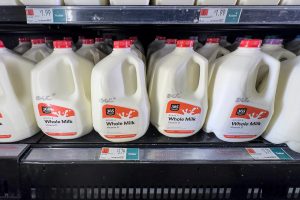
During unprecedented times like our society has been through the past two-plus years, the week-to-week swings may seem daunting. We’ve experienced a pandemic, global weather challenges, geopolitical uncertainty, and volatile movements in commodity prices. That last category has included both limit up and limit down with futures prices in the commodities that drive your dairy’s bottom line.
Many have spoken or written about the challenges associated with markets like we’re working within. Referencing Steve Martin’s comments in the recent Hoard’s Dairyman article, “Shadow prices can help shape rations,” in the February 2022 edition on page 109, I’ll echo that volatility is a major concern for dairy herds and nutrition programs. Martin spoke to shadow prices being an avenue to reduce feed costs. In addition to this approach, there are other ways we can lessen input costs. However, some require a bit of effort to uncover; more on this shortly.
Volatility: friend or foe?
From labor, to equipment, to dairy supplies, to feed availability, and even prices — volatility is a new normal for us to manage in our dairy businesses. Some have cast volatility in a negative light. However, I believe that with change comes opportunity! I remain steadfast in seeking the positive with the undeniably changing dairy business landscape ahead. Despite volatility and changes, I know that there are exciting times ahead for our dairy industry. Consumers throughout the world continue to demand more nutritious dairy protein and butterfat, and our industry is poised to deliver!
Finding positivity day to day can take many forms. For example, the sun shining can bring a hint of positive energy that we can latch on to. Or perhaps we find some positivity in feed economics by recognizing a greater protein level in an expensive commodity.
These are both fairly common occurrences week to week, but they might not be commonly recognized. While many of the challenging issues such as weather or market swings are well outside of our control, we can find new positives through better managing several expensive farm inputs.
From fertilizing the soil to supplementing your dairy ration, there’s positive news to be uncovered through a better understanding of what power you have in your crop or feed inputs. Think of this like knowing what you’ve got under the hood of your tractor before hooking up to an implement requiring 200-plus horsepower (hp) at the wheels to pull through the field. Both manure and your protein supplements may have more horsepower than we expect!
I’ve discussed manure at length over the prior six to eight months, focusing upon fecal starch measures while evaluating dietary starch digestibility. I’ve done so from an animal nutrition standpoint. More recently, though, I’ve learned that there’s much more to learn from manure.
Manure varies just like milk
In collaborative efforts with experienced agronomists, we’ve uncovered considerable differences in manure nutrient concentrations in nitrogen (N), phosphorus (P), and potassium (K) within the same farm and same lagoon while pumping out. These differences warrant much further discussion with your agronomist.
The difference in manure’s agronomic value has been striking. In one case, we detailed that a field fertilized with more nutrient-dense manure equated to hundreds of dollars less per acre in fertilizer costs after accounting for the added P and K supplied through the manure!
In this same vein, work with your agronomist to not only account for fertilizer inputs provided by manure but also accurately calculate your crop production costs per acre. Understanding your production costs will permit you to calculate accurate forage feed costs. This then puts your nutritionist in a better position to help you direct your nutrition program and identify best-cost options.
What’s in that feed purchase?
When transitioning from crop inputs to feed inputs in dairy diets, in many cases there’s positive economic value to be found in purchased feeds. All of our feed costs have risen, and we can’t control this fact. Through countless experiences over the past two years with business-minded dairy owners and their nutritionists, we have found more value than we knew about in purchased feed. In numerous experiences, we’ve found enhanced protein content, lesser moisture content, or both! More protein or less moisture meant we could cut back on the feeding rate and save some feed cost.
Think of this like buying a 250 hp tractor but hooking up a dynamometer and recognizing it’s tuned to 300 hp! It’s time we all move away from assuming a constant moisture and protein content in purchased proteins when building dairy rations. The volatility in purchased feeds is nothing to shy away from; there is margin to be found. You’ll hear or read more from me about this concept in months to come.
Systems to drive decisions
The crop and feed input cases described above have proven exciting and generated great discussion during volatile and tumultuous times. We also need to develop systems to drive decisions with these newfound positive values uncovered for manure or purchased feeds. These decision-aiding systems will rely upon new data, which will then drive active notifications through automated reporting.
This is just like the check engine light on your truck or tractor. Engine performance data is generated by sensors, the data is monitored, and when a decision needs to be made, the check engine light comes on and it’s time to act.
This metaphor captures the direction I see our industry heading. One colleague recently commented, “Can’t we just have a decade of normal?”
The answer is likely no.
There will be volatility and changes ahead. However, if your dairy embraces the volatile nature of this business and takes control of positive opportunities like those discussed here, the future is bright!























